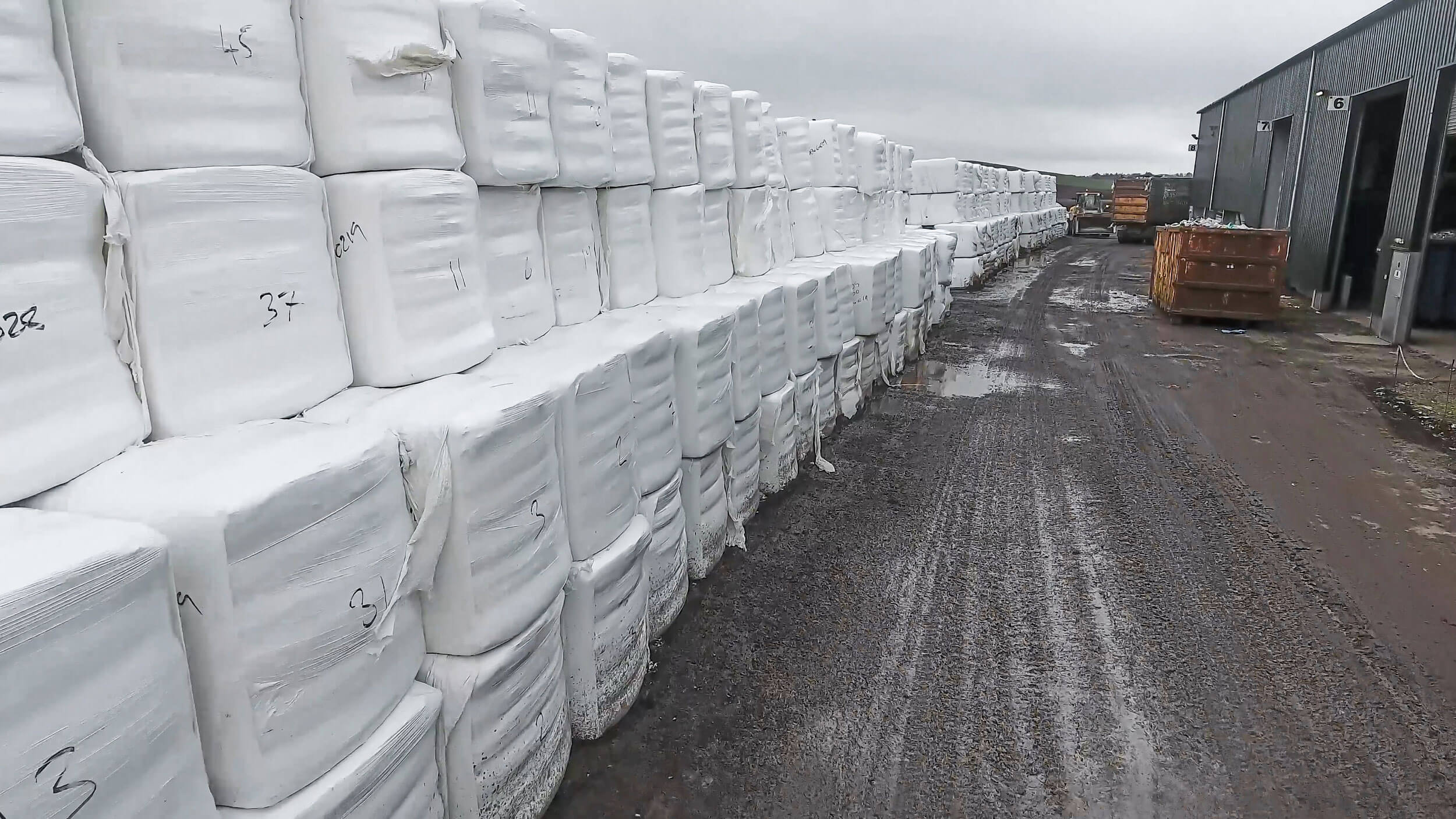The Binn Group, Scotland's leading independent provider of integrated recycling and resource management solutions, shreds industrial waste with a WEIMA PowerLine 2000 for further processing into secondary fuel.
The recycling specialist offers a wide range of services, from waste recycling and waste minimization to solutions that help improve the environment. According to Scottish regulations, only 5 % of waste may be disposed of in landfills by 2025. Binn Group is making great strides to achieve this.
For example, Binn operates a material recycling facility where a variety of recyclable materials are separated, graded, baled and sent to re-processors. This allows over 86 % of all materials entering the plant to be transformed into useful commodities. The remaining 14 % is then processed into SRF (Solid Recovered Fuel), which generates electricity and power from the materials that would otherwise end up in a landfill. This way, the use of fossil fuels such as coal can be avoided.
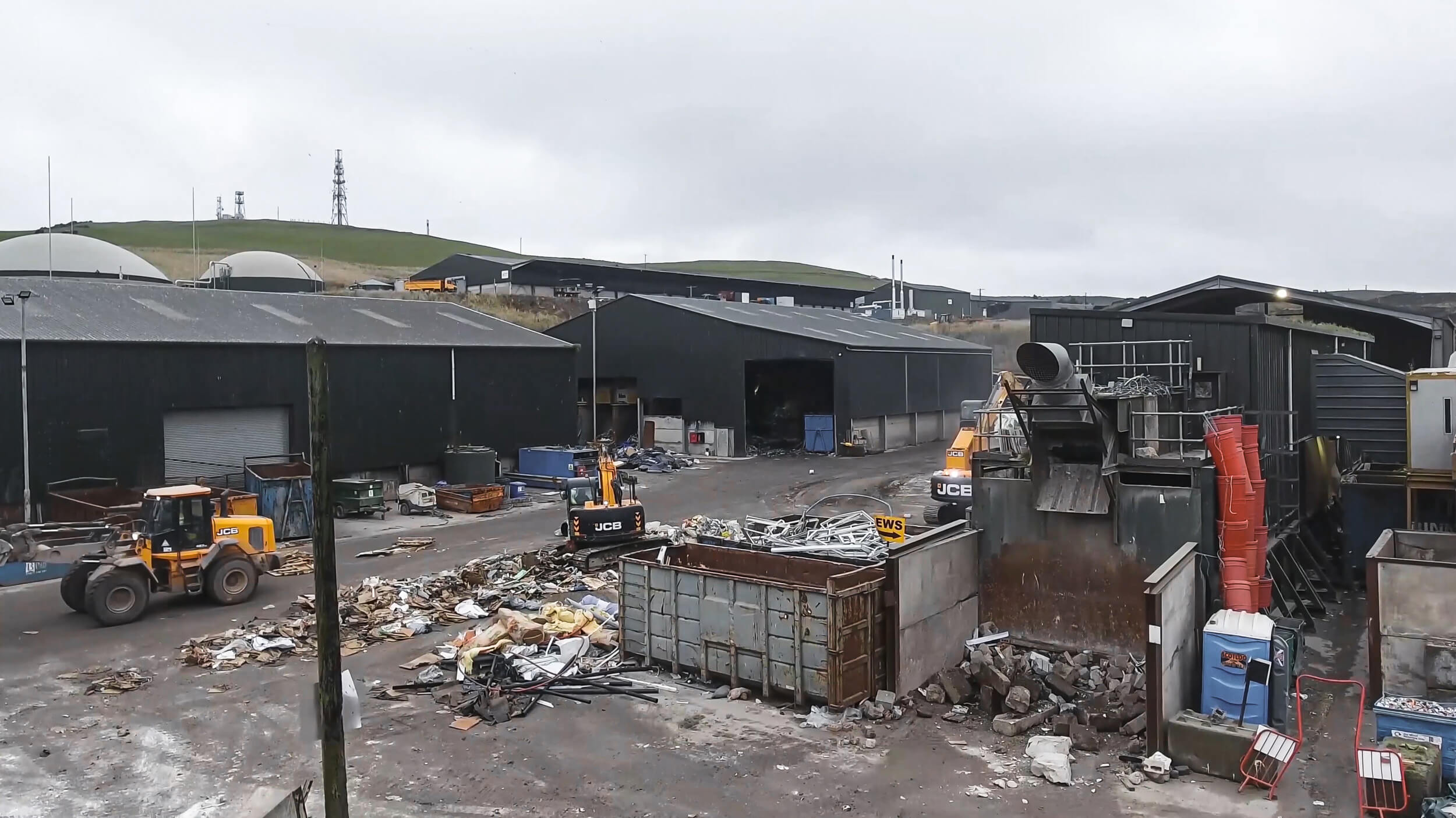
Binn Group’s material recycling facility in Glenfarg, Scotland
Optimally integrated into the production line: WEIMA’s PowerLine 2000
To produce high quality SRF, the non-recyclable material must first be shredded to 250-300 mm with a pre-shredder. The material is then dried to about 15 % moisture. After drying, it is fed into a hopper by a telehandler and transported to the next station by a conveyor belt.

The conveyor belt system transports materials that were screened by the wind sifter to the picking station.
First, a separator uses a roller to remove bulky and long fibrous materials from the waste stream. The material is then separated by density, using a wind sifter. The light materials are sent to a picking station where trained staff remove non-conforming materials such as PVC and cardboard. Even particularly heavy materials are manually sorted on a separate conveyor belt and usable material is returned to the waste stream. This is then passed under an over-band magnet and an eddy current magnet, which remove all ferrous and non-ferrous metals.

The WEIMA PowerLine 2000 is fed by conveyor belt.
The material is finally fed into the WEIMA PowerLine 2000 single-shaft shredder, which shreds the material to a considerably smaller size before it can be further processed.
Ideal for industrial requirements
The Binn Group had clear requirements for the shredder: it had to be able to shred the material from 300 mm to 40 mm, with the lowest possible energy consumption and a high throughput capacity. The British dealer for WEIMA shredders, CRJ, was able to find the optimal solution together with Binn: a WEIMA PowerLine 2000.
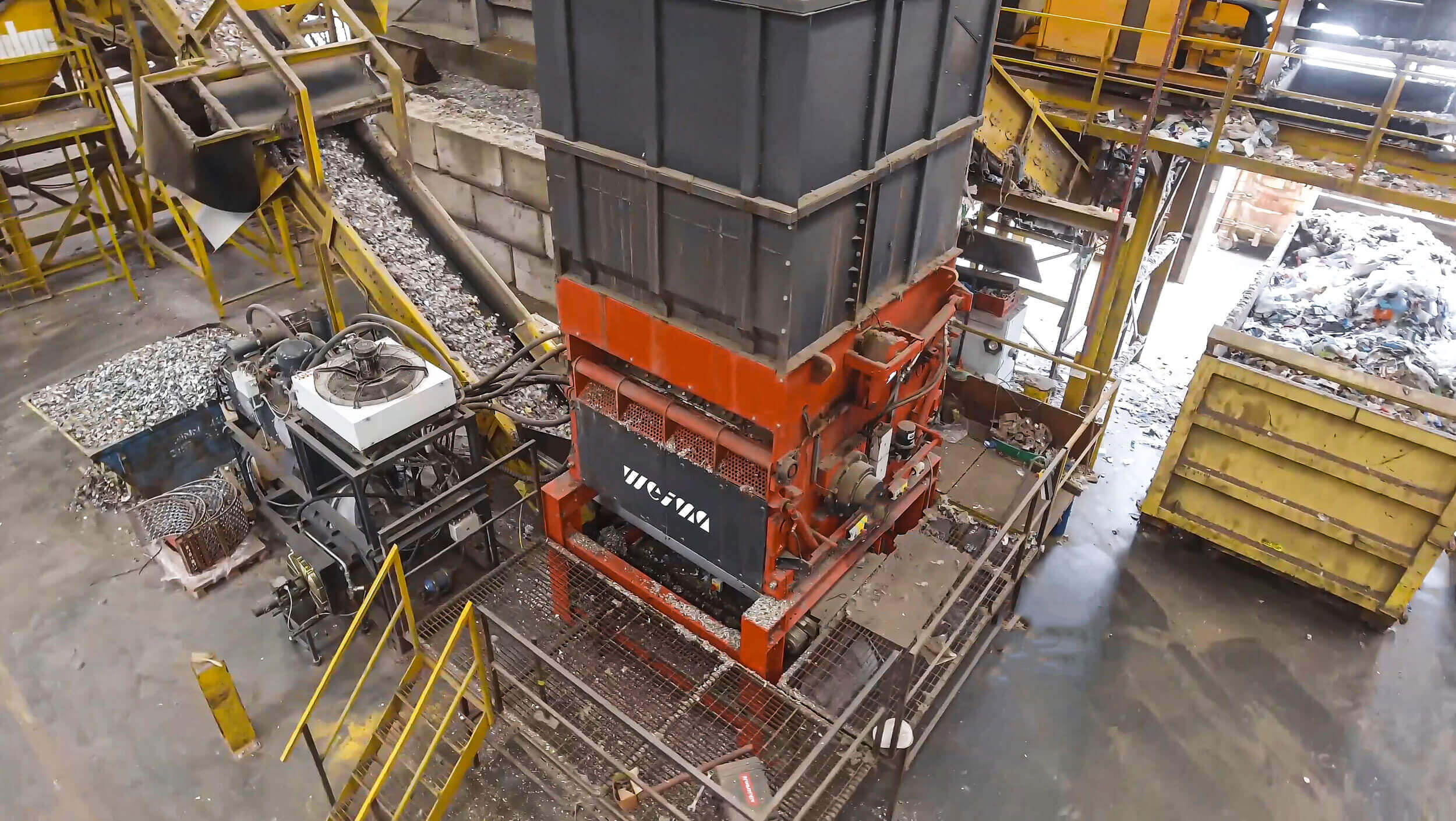
Powerful and economical: the WEIMA PowerLine 2000
No matter what kind of waste, the WEIMA PowerLine 2000 shreds everything with a working width of 2000 mm and a rotor diameter of 800 mm. This is particularly ideal in the production of secondary fuels. The PowerLine is well suited as a secondary shredder in a multi-stage plant and reliably processes the SRF-suitable materials to a homogenous size.
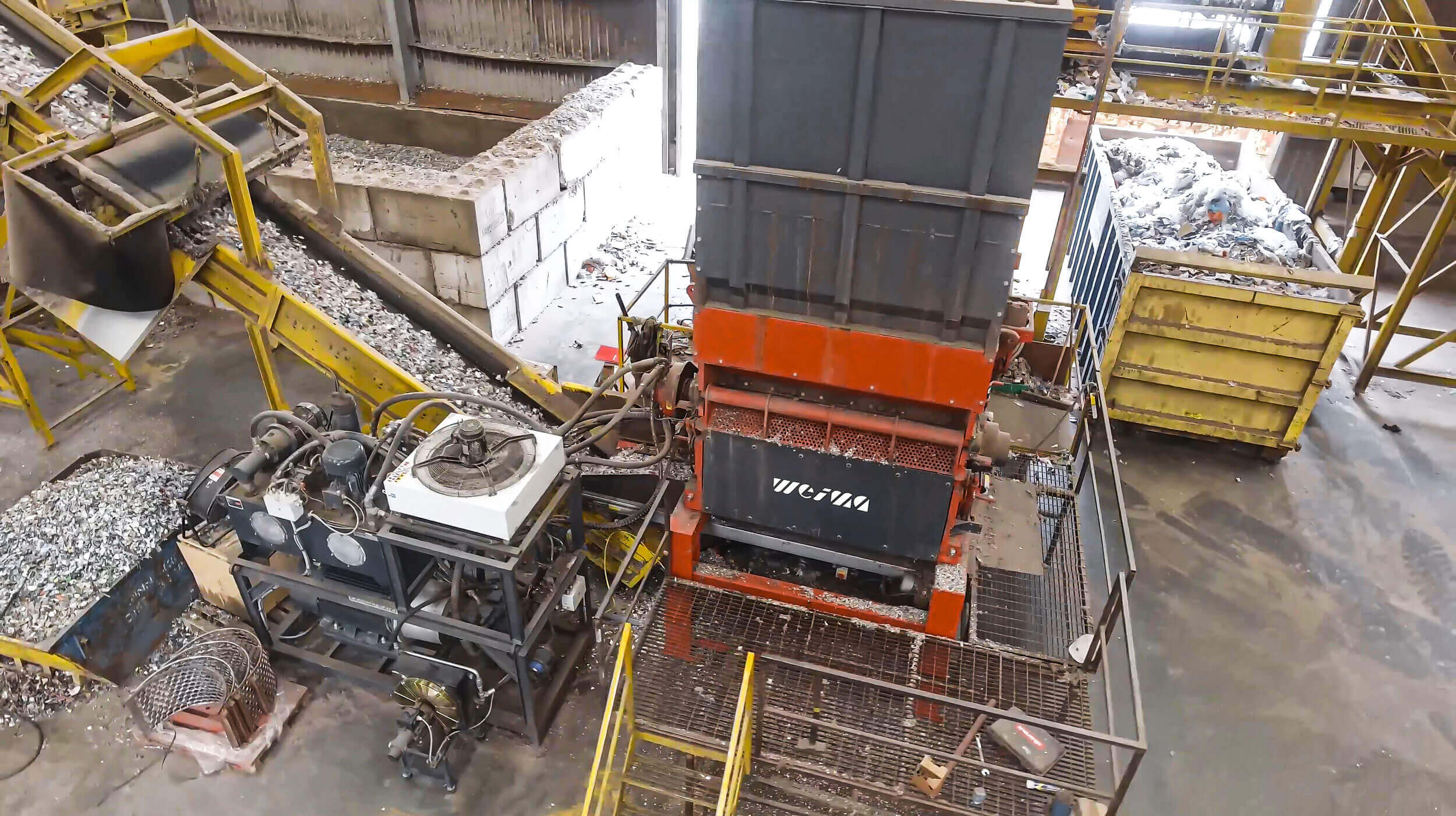
PowerLine 2000 with hydraulic drive
In order to guarantee this uniform material size, the WEIMA PowerLine 2000 is equipped with a screen basket, which only allows the material to pass to the conveyor belt when it has been shredded to the desired size. In addition, the counter knives are mounted diagonally and thus ensure a particularly aggressive cut.
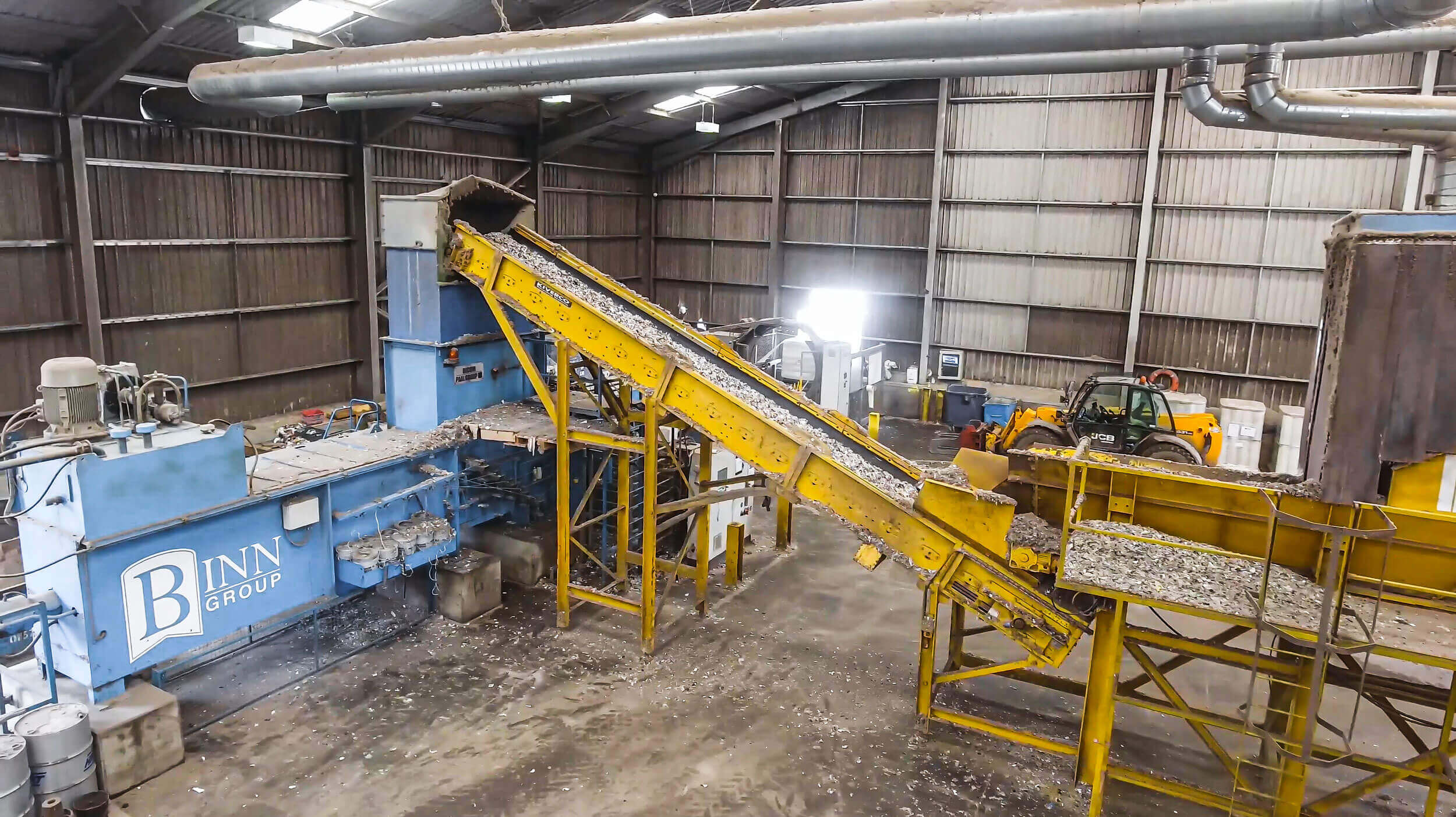
The shredded material is transported via conveyor belts.
The universal single-shaft shredder can be equipped with a hydraulic drive, direct drive or power belt drive. The Binn Group decided to use a powerful hydraulic drive, which offers high torque at a low kW number.
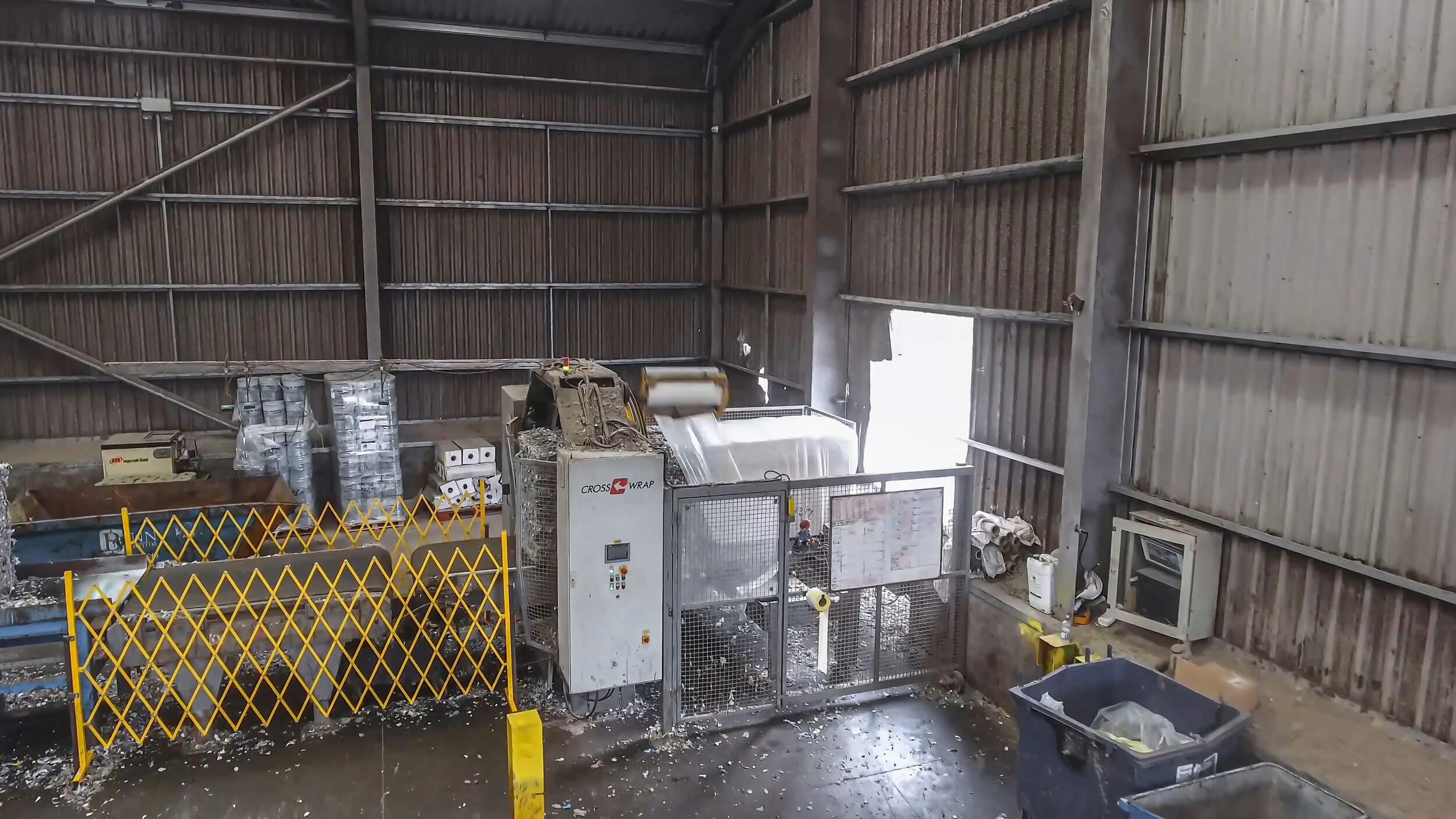
The bales are packed and stored for dispatch.
Finally, the shredded material is bundled, packed and stored ready for dispatch. The baled SRF is transported to Denmark where it is used as alternative fuel. This way Binn Group is well positioned for a more sustainable future.
